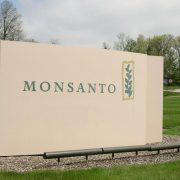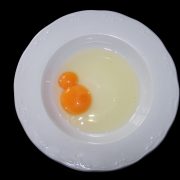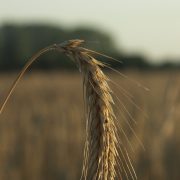Argentina: Farming companies encourage R & D in soybean
Groups CREA in Southern Santa Fe focused their research to get greater yields of the legume with high protein level. After three years of testing, the results show that there is a positive relationship between well-fed crops and high levels of both yields and protein.
A group of agricultural entrepreneurs CREA of the South of Santa Fe contacted researchers at the Faculty of Agricultural Sciences of the National University of Rosario (UNR) to assess the levels of protein in soybeans from different regions.
Researchers at UNR, Lucas Borras, Joseph and Joseph Gerde Rotundo, who initially began evaluating samples submitted by companies CREA Southern Santa Fe, joined the tesista Guillermo Ravera for faster data processing.
“Most of the samples analyzed in the last three seasons were unable to access the bonuses offered by the industry,” Ravera said during a presentation held in the city of Buenos Aires to the Committee on Agriculture Aacrea.
Given the progressive fall in the level of protein soybean recorded by Argentina, in recent years different oilers factories began offering bonuses of 10 or $ s / ton, based on the price “slate” Rosario, for protein levels of 38, 5% to 39.0%, or $ 15 s / t for the range of 39.1% to 39.5% and 20 u $ s / ton to levels above 39.6%.
“In order to identify environmental and management factors that can change protein levels, we use a data mining program, which allows the use of different statistical techniques to uncover hidden patterns in large databases without any a priori hypothesis,” said Ravera .
The method used to identify key variables was “regression trees”. A sample of 963 cases, which together recorded an average of 37.1% protein, derived mostly located in the Pampa fields core area, while a minor portion came from the north of Córdoba, Santiago del Estero, Chaco, La analyzed Pampa and Entre Rios. They correspond to the 2012/13 and 2013/14 campaigns.
“With this methodology we explain 43% of the observed variations. And of that 43%, 60% of the variability is explained by maturity group, “Ravera.
Cultivars with maturity groups V, VI, VII and VIII (usually employed in the north) recorded an average protein level of 38.7%, while III and IV short short and long (mostly planted in the Pampas) showed an average of 36.6%.
“The data generated by the regression tree indicate that there would be an inverse relationship between yield and protein level, something already known; the purpose of our job is to find those variables that will achieve high levels of protein with high yields, “said researcher UNR.
In that sense, tests conducted by the CREA Southern Santa groups show that there is a positive relationship between well-fed crops and high levels of both yields and protein.
“In the analysis we have to add more management variables such as fertilization, application of fungicides, soil series, etc., and environmental variables such as temperature or radiation, so as to be able to detect more precisely what we are seeking,” Ravera said.
Source: Valor Soja













